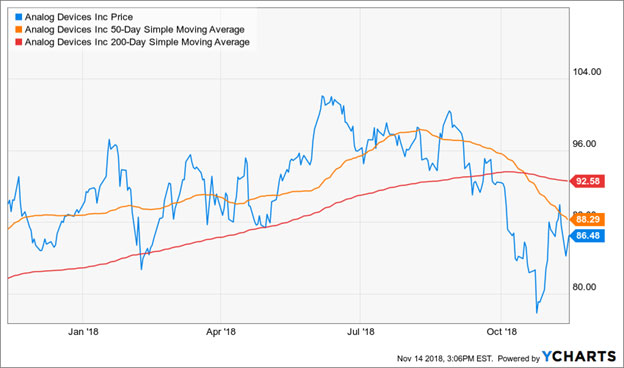Smart sensors the size of dust particles are blowing in
Computers as small and light as particles of dust are moving out of the realm of science fiction, according to a recent Wall Street Journal story.
It changes what is possible in computing. It opens up new investment opportunities.
It is already possible, although not entirely practical, to make computers the size of a grain of rice. That’s small. However, building wireless devices the size of dust particles that are fully capable of sensing their surroundings, computation, communication and self-power would be a monumental leap.
In August, Gartner Inc., a leading information technology research firm, added smart dust back to its Hype Cycle for emerging technologies.

Much of the recent push is about timing. Developers are excited about advancements in sensors, the Internet of Things, fifth-generation wireless networks and edge computing. Connections are getting so fast and networks are so powerful, building nanoscale computers finally makes sense.
The possible applications are mind-blowing …
- Factory floors will brim with machines smart enough to understand when maintenance is required.
- Tiny sensors will monitor farms, giving early warning of crop damage.
- And cities will be able to keep track of vehicle traffic and people flows.
Computing devices no larger than a speck of dust will connect to powerful networks and bring new advances in business, medicine and surveillance.
Given the possibilities, is it not a huge surprise that military interests were at the forefront of early smart dust development …
The Rand Corporation and the Defense Advanced Research Project Agency began working on microelectromechanical systems way back in 1992. Five years later, DARPA funded the research of Kris Pister, a professor of electrical engineering at UC Berkeley.
At the time, Pister imagined a world in which ubiquitous sensors could measure everything that could be measured. Immediately, he thought about environmental applications.
Pinpointing weather patterns would be a killer application. His military benefactors were thinking about tracking people.
Ironically, a decade later, people would begin voluntarily carrying devices — coupled with private-sector software — that would accomplish the same thing.
However, smart dust does not require a privacy policy.
In 2016, UC Berkeley researchers published a paper that pushed microelectromechanical systems (MEMS) far beyond the capabilities of smartphones, wearables, Facebook and Google.
Neural dust, according to an article in Forbes, will eventually place tiny sensors inside the human skull to track brain activity.
As far-fetched as it seems, researchers believe the see a path over most of the stumbling blocks. They have a roadmap to developing devices on a nanoscale level. They also believe they can overcome the communication and computing challenges.
Right now, the issue is power. Getting all those sensors juiced up — and staying connected to the network — seems to defy the laws of physics.
The Journal points out that a smattering of startups is working on silicon that consumes miniscule amounts of energy. One company, PsiKick, a maker of batteries for Internet of Things applications, claims its chip consumes 1 million times less energy than an iPhone.
Other firms have tried to harness energy from vibration, light, magnetism, temperature and chemical reactions. Their success has varied. RFID tags, for example, get their energy from a base station. As the reader accesses the tag, it comes alive with bags of useful information.
Passive Wi-Fi uses backscatter communication to transmit power to existing Wi-Fi chipsets. University of Washington engineers were able to shoot power through walls to off-the-shelf smartphones from 30 feet away.
One of the best ways for investors to play the ultra-low-power trend is Analog Devices (ADI).
In the nearer term, its SmartMesh IP is building a standards-based ecosystem around energy-efficient wireless networks. It is 8x more energy-efficient than other standards; networks are scalable, sustainable and self-healing.
SmartMesh networks make good economic sense for companies that push computing to the edge of their networks.
Over the longer term, Analog continues to work toward smart dust. Dust Networks, the company founded by Kris Pister, was acquired by Linear Technology in 2011. Today, the IP lives on as DustCloud, an Analog Devices subsidiary.
Analog Devices had $5.1 billion in sales during 2017, an increase of 49% over 2016. Despite this, like other semiconductor stocks, it has been mired in a global-trade-induced funk. Trade groups and investors fear the worst is yet to come as the trade war escalates.
Analog trades at only 15x forward earnings. The market capitalization is has fallen to $33 billion. Given the outlook for innovative products, like smart dust, this valuation seems low.
Investors can buy the stock into further weakness over the next few months.
Best wishes,
Jon D. Markman




